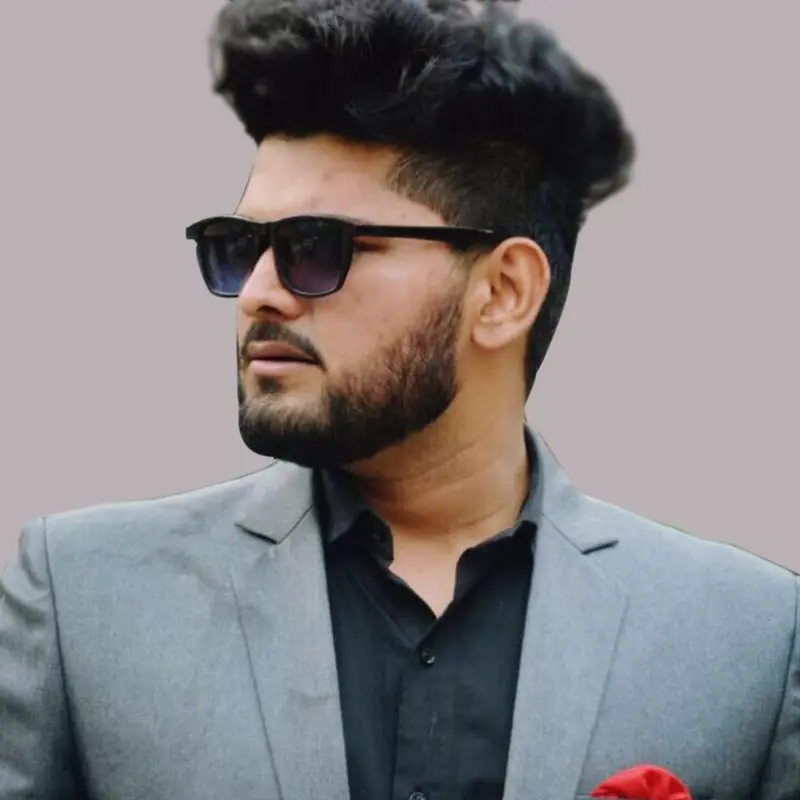Table of Contents
“Analytical software enables you to shift human resources from rote data collection to value -added customer service and support where the human touch makes a profound difference.” – Bill Gates
Workforce analytics has been around for quite some time now, and it is still going strong today. In fact, you might be surprised to learn that workforce analytics isn’t just a method of data collection and analysis.
Instead, workforce analytics can actually be described as an umbrella term encompassing several separate processes and methods of gathering data and then using it to your company’s advantage to make better decisions and gain a competitive advantage over the competition.
So, how exactly do these methods of collecting and analyzing data help your business? Read the complete guide to know the answer.
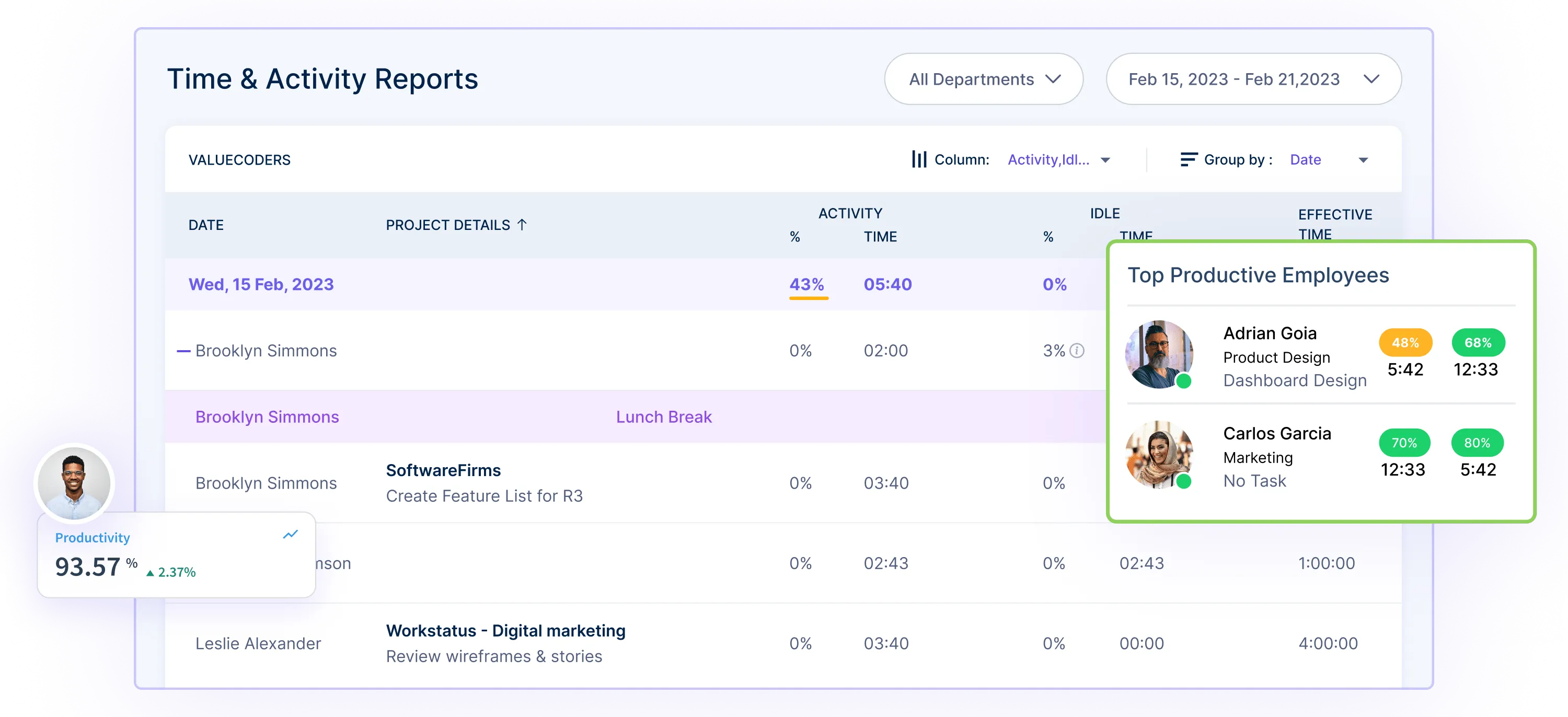
Let’s dive in-
What is Workforce Analytics?
Workforce analytics uses data and statistical methods to understand how people interact with organizations. These methods optimize organizational processes, minimize costs, maximize productivity, and improve employee satisfaction.
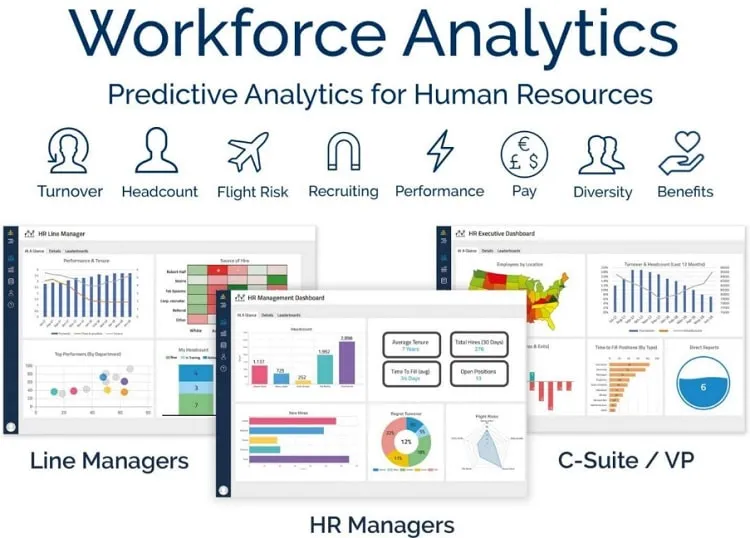
You can use workforce analytics to predict how changes in policies or procedures will impact employees’ ability to do their jobs effectively. For example, you might want to know whether providing on-site childcare would increase employee retention rates or whether offering flexible working hours would reduce absenteeism due to family emergencies. These questions can help organizations make informed decisions about allocating their resources wisely while maximizing overall effectiveness and impact.
You must be wondering-
Is it wise to invest in workforce analytics? What if its market collapses? Will it be here for a long time?
So, the next section is answering all your questions and doubts.
Workforce Analytics Trends & Market
The need for advanced analytic tools is growing rapidly as organizations find it challenging to analyze vast volumes of different departments’ data in real-time. Let’s review its past, present, and future-
The Past: (2015-2020)
In 2015, the global workforce analytics market size was USD 422.5 Million and was projected to reach USD 860.4 Million by 2020, with a CAGR of 15.3% during the forecast period.
The Present & The Future
However, the analytics market in 2020 was actually valued at USD 765.72 Million (slightly less than what was predicted) and is now expected to reach USD 1831.13 Million by 2026, with a CAGR of 15.64% from 2021-2026.
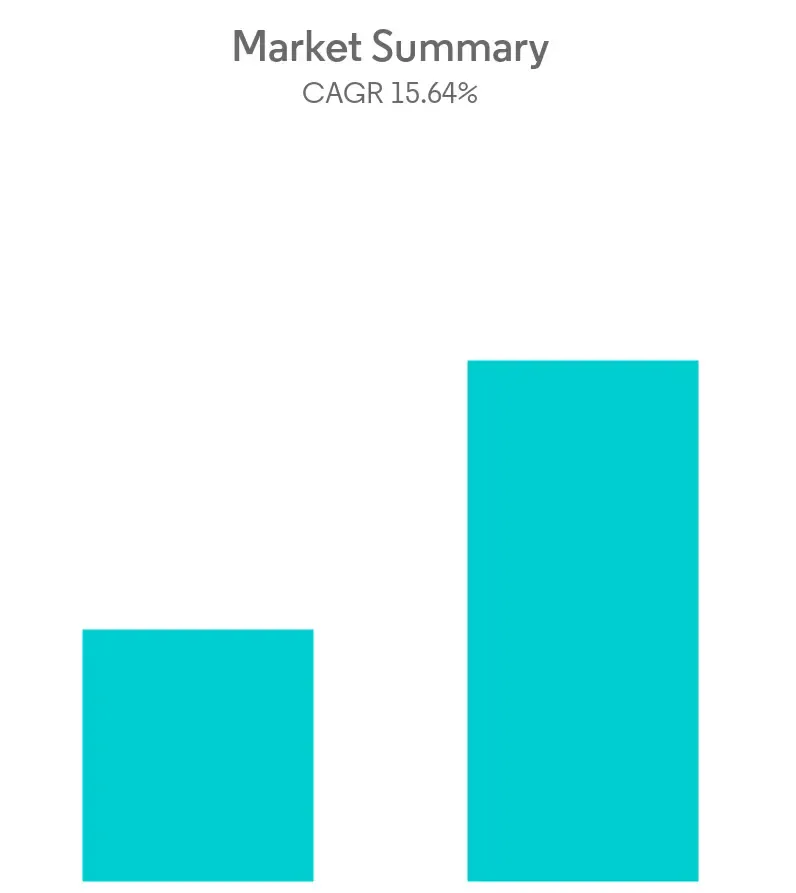
The need for conventional workforce management techniques has decreased as workplace complexity has increased. It is now time for businesses to take advantage of technology’s ability to perform well even under heavy workloads to attain efficiency at maximum capacity levels. Plus, the rapid expansion of big data and analytics will undoubtedly increase the demand for workforce analytics to streamline workflow.
So, you can rest assured that workforce analytics is not going anywhere, and it will be here for businesses like yours to help you grow and succeed at much faster rates.
Benefits of Workforce Analytics
1. Improved Customer Service
Companies that use workforce analytics can provide more accurate and timely customer service. For example, if a company knows the number of people available in each department, it can better distribute customer service requests among those employees.
Additionally, companies who want to improve their customer service through workforce analytics can look at when customers call for assistance by tracking what days and times these calls occur.
2. Reduced Turnover Rate
Workforce Analytics can have a positive effect on efficiency and can reduce costs. For example, if your company has a high turnover rate, you may be able to find patterns amounting to employees leaving. It could lead to the discovery that particular job descriptions are not appealing or an issue with benefits packages. It would then be easier to address this issue before too many employees leave and it becomes a problem.
3. Enhanced Performance Management
Workforce analytics can reduce the time it takes to review performance and identify employee performance trends. It can also help eliminate the need for lengthy and costly performance reviews. Many companies use workforce analytics to improve their understanding of how different teams perform daily, which has helped them make more data-driven decisions about their people.
Furthermore, workforce analytics can help you identify where you might need more staff or whether certain positions should be eliminated altogether.
4. Better Staff Scheduling and Labor Planning
Workforce analytics can help you better schedule and plan your labor. For example, workforce analytics can help you assign tasks to the most appropriate person for the job and predict how many people are needed for a particular task. It helps prevent understaffing an area when it needs more workers. It also helps identify who is qualified to perform a specific task so they can be assigned that task in the future.
Additionally, managers can get valuable insight into their teams, such as how well they are working together or what their strengths or weaknesses may be.
Thus, with workforce analytics, companies can easily anticipate staffing needs to stay ahead of seasonal peaks and troughs.
5. Better Decision Making
Workforce analytics can help make better decisions by uncovering patterns in the workforce. When you have a better understanding of your workforce, you can spend more time on the activities that have the most impact on your business. When aiming to use cutting-edge software for data analysis and visualization, gaining skills such as those offered through Power BI courses at DataCamp can significantly benefit organizations. These courses are designed to provide essential skills needed in the digitized world, helping teams create visualizations and dashboards that effectively leverage workforce analytics data to foster informed decision-making.
6. Higher Employee Morale
Employees have higher morale and productivity when they are in an environment that is optimized for their individual needs. The use of workforce analytics can help you determine the best working hours for your employees, the time slots that have the least amount of interruptions or distractions, and what type of work environment will allow your employees to be most productive.
Track The Most Powerful KPIs From Workforce Analytics
Many CEOs and business executives have admitted that the introduction of big data has led to significant changes for them. Every company is different, and so are its workflow and resources requirements.
But, you can track the below KPIs to optimize your workflow for desired business outcomes irrespective of your company-
1. Budget Allocation
Budget allocation tracking lets you see how well your team members are doing at meeting goals and quotas so you know if you need to make adjustments or not. It helps you track how much time people spend on different projects so you can make sure everyone is fairly compensated for their efforts.
Also, consider the following factors during budget allocation tracking –
- Who is making the decisions regarding where money will go?
- What criteria should be used to make these decisions?
- How much money is available to spend?
- What are the goals or purposes for which this money will be used?
- How do other factors influence the way this money gets spent?
This might help you in completing your projects within a defined budget (or even less budget) and deadline.
2. Staff Attrition/Turnover
Workforce analytics is about measuring the success of your business. Attrition/turnover critically impacts the company’s KPIs (Key Performance Indicators) because it indicates how satisfied your employees are with their jobs and how likely they are to stay with your company long-term.
If you have high turnover rates, then this means that your employees don’t enjoy working for your company, or they don’t feel like they’re being treated fairly by management. This information can help you make changes to improve employee satisfaction so that you see lower turnover rates in the future!
3. Employee Absenteeism Tracking
Employee absenteeism is something that all companies face, but not all of them know how to deal with it properly. The problem is that employee absence tracking has traditionally been challenging to do correctly, so many companies haven’t been able to get the insights they need to address this issue properly.
Consider the following factors while tracking employee absenteeism-
- Frequency of absence
- Length of absence
- Reason for absence
- Responsiveness to employee requests for time off
A good analytics system will help identify trends and patterns among employees to take proactive steps to ensure that everyone feels supported and able to do their job successfully without being penalized for taking care of themselves or their loved ones. It means making sure that your HR policies regarding sick days are fair and equitable across all levels of seniority within the company.
4. Operational Efficiency
Operational efficiency is vital for workforce analytics because it allows businesses to make data-driven decisions about how best to utilize their employees’ time. By knowing where employees are spending their time and how much time each activity takes, companies can optimize their processes to maximize productivity while minimizing costs.
It also makes it easier for team leaders to understand how their teams are doing and where they need help to make better decisions about allocating resources within their departments.
5. Employee Engagement
Employee engagement is crucial in ensuring that your business runs smoothly. It’s essential to understand what causes low employee engagement rates so that you can fix them.
So, if you have a poor employee engagement rate, look to improve the following things-
- Job Responsibilities
- Compensation
- Company culture
- Task flow
- Career Advancement Opportunities
Another way to check how much employees are engaged is by looking at how many employees actively participate in company events. You can also start rolling out employee surveys to understand their needs and develop strategies based on the feedback. So this way, employees will have a work-life balance and show more involvement at work.
6. Productivity Management
Productivity management is essential for workforce analytics because it helps you understand which of your employees can meet their goals and which ones might need some additional training or assistance to improve. It’s important to know which employees are performing well to recognize them for their hard work and which ones might need some help improving so that you can offer them the resources they need to get back on track.
Beat the Competition With Workstatus

Workstatus is simple yet powerful enough to handle even the most complex teams. Whether you’re managing remote employees or keeping tabs on your in-office team members, Workstatus will give you all the data you need in one place so you can make smarter business decisions faster than ever before.
Some of its notable benefits:
- Workstatus allows companies to track employee activity in real time, so they know when someone is working or not.
- It’s easy to use, even if your company has hundreds of employees using it at once.
- Companies can see where their biggest ROI (return on investment) comes from by analyzing the software’s analytics reports.
- The price point of this software makes it affordable for any business looking to optimize their workforce and get the most bang for their buck!
Special Highlights:
- Automated Data Collection
- GPS tracking of Mobile Workforce
- Real-Time Updates
- Absence/Leave Management
- Easy-to-Use Dashboards
- Performance Management
- Built-in Productivity Meter
- Workforce Analytics Reports
At last, Workstatus will give you an easier way to track how much time each employee spends on different projects to ensure that everyone is being adequately compensated for their efforts.

With this information at your fingertips, it will be easy to spot trends and see where adjustments need to be made; but more importantly, it will empower your employees by giving them greater autonomy over how they do their jobs daily!
Keep Your Finger On The Pulse
Growing competition means all organizations need to improve and become more efficient. Businesses can succeed by managing their employees, who are ultimately responsible for all company activities.
And workforce analytics has changed how organizations streamline their workflow by providing deep analytical insights. That’s why companies implementing this system have the edge over their competitors in the long run.
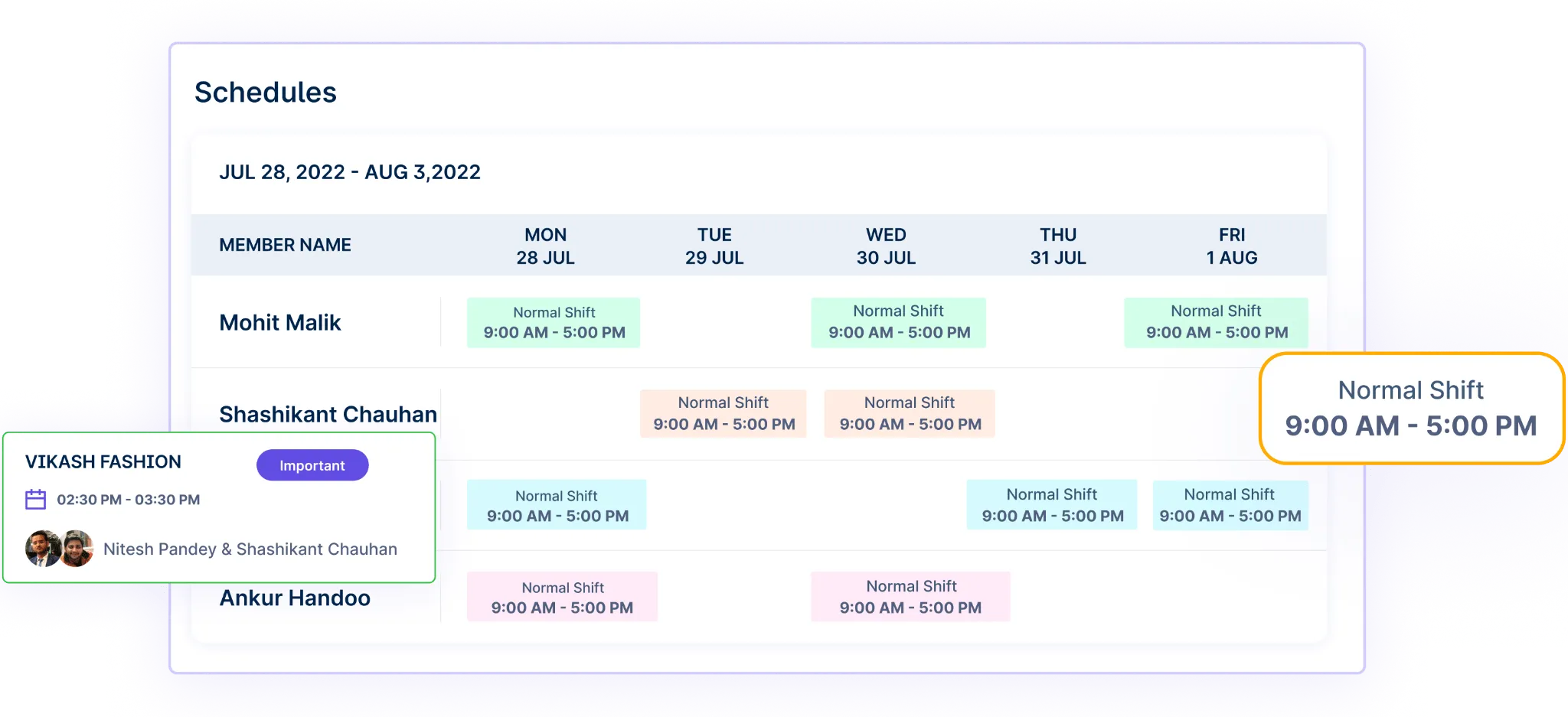
Use Workstatus’ workforce analytics software to always stay updated with the changes in your workforce from anywhere.
FAQs
Ques. What is workforce analytics, and why is it important for organizations?
Ans. Workforce analytics is the process of collecting and analyzing data related to an organization’s workforce to gain insights into areas such as recruitment, retention, productivity, and employee engagement.
By leveraging workforce analytics, organizations can make data-driven decisions to optimize their workforce, improve operational efficiency, and increase employee satisfaction and engagement.
Ques. What are some trends in workforce analytics that organizations should be aware of?
Ans. One trend in workforce analytics is the increased use of artificial intelligence and machine learning to analyze data and identify patterns and insights.
Another trend is the shift towards using workforce analytics software like Workstatus, which enables organizations to make more timely and informed decisions.
Additionally, there is a growing emphasis on using workforce analytics to address issues related to diversity, equity, and inclusion in the workplace.
Ques. What are some common KPIs used in workforce analytics?
Ans. Common KPIs used in workforce analytics include turnover rate, employee engagement, resource management, attendance tracking, and productivity metrics.
Furthermore, organizations may track metrics related to diversity and inclusion, such as the representation of underrepresented groups and pay equity, to ensure that they are promoting an inclusive and equitable workplace.


